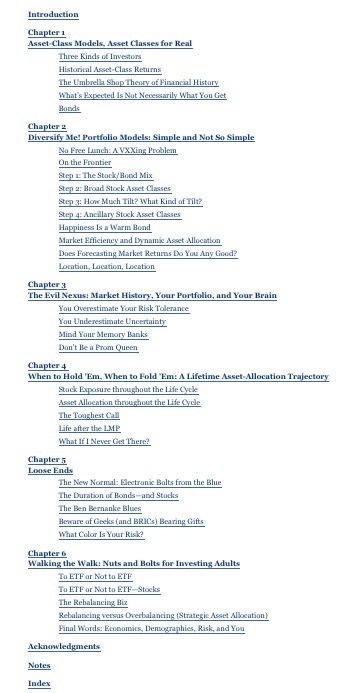I have just about finished the book. He goes through one's investing career and encourages diversifying, taking risk and sticking with it. For retirees, he has gone completely low risk for residual living expenses ( the $$ one needs after pension, SS and other periodic benefits) x years in retirement. In other words, he encourages taking the entire amount off the table (living expenses x years in retirement) and investing in an inflation-adjusted annuity, TIPS ladders, CDs and plain vanilla Treasuries. Anything over that amount can be invested into your risk portfolio. So, the basic gist to me was to stop playing and go home?! Of course, this investment portfolio carries risk too. What if there is high inflation, I outlive my imaginary number of retirement years....
Has anyone else read his book and if so, what conclusions did you come too?

